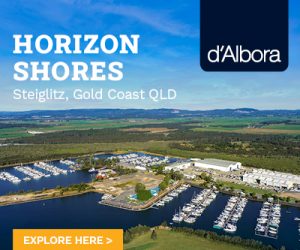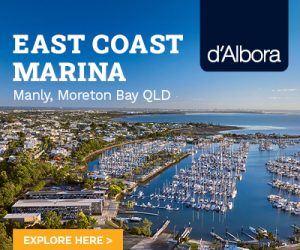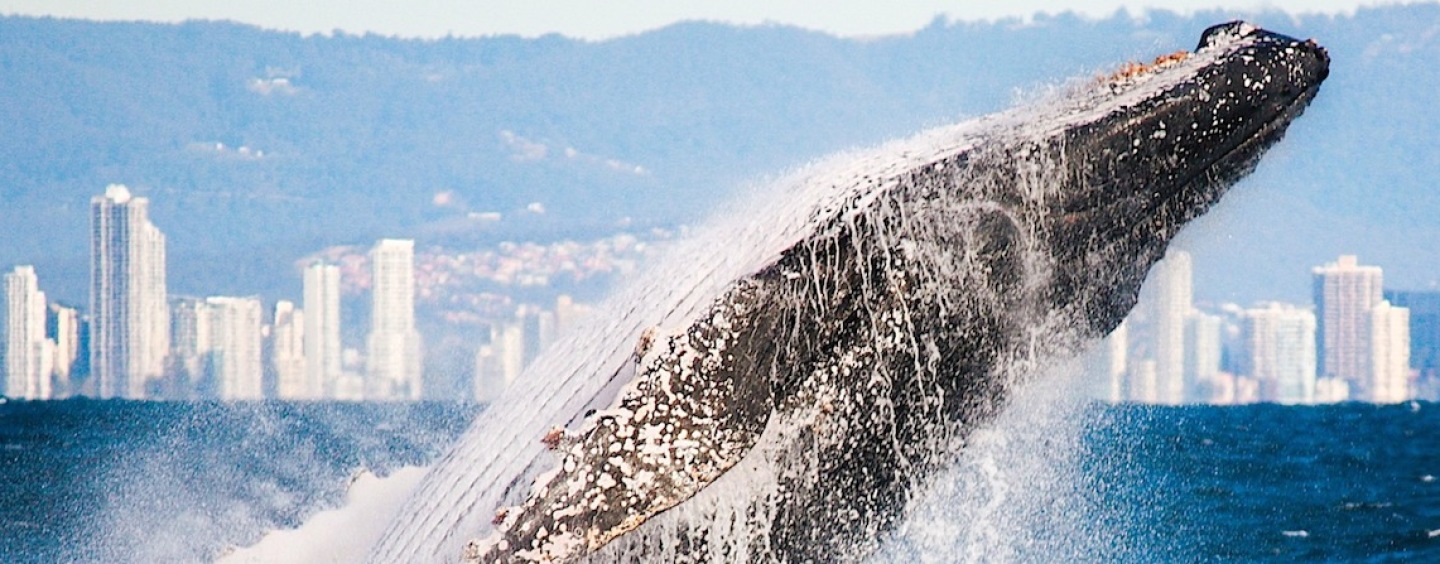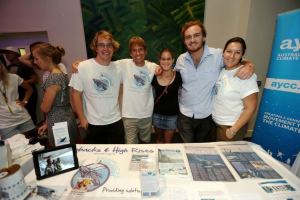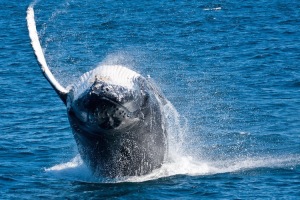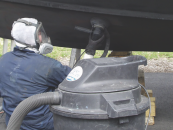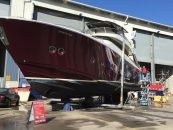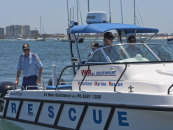From May to November every year, the humpback whales stage a grand nature show in Gold Coast waters. Juliet Saltmarsh goes behind the scenes to interview Olaf-Jan Meynecke, the founder of Humpbacks & High-rises, a not-for-profit group conducting research on these magnificent mammals as they go through the Gold Coast bay.
How did Humpbacks & High-rises (HHR) come about?
Over five years ago, I started Humpbacks & High-rises, a volunteer community organisation dedicated to the research and protection of humpbacks whales and other cetaceans in urban coastal waters. As a marine scientist working and living on the Gold Coast for many years, it surprised me that there was very little research done on marine mammals in the Gold Coast bay. So, the idea was to raise awareness.
As with all volunteer-based organization, we have little or no funding, and undertaking research is, in general, a very costly exercise. I had the idea that we could ask some of our local whale watch operators to allow us to undertake research and monitoring from their boats. After a couple of meetings and introducing the idea, a number of operators started to support us. The response from a number of Gold Coast businesses has been fantastic, and in particular, students are joining our team for experience. We have up to 50 volunteers every whale season who help run the surveys, and about 100 who register their interest.
What does your research show, and why is there a need for it?
We monitor the humpback whales and detect changes in behaviour, pick up possible diseases, and any problems the animals might have. It is a natural resource that is generating millions of dollars for Australia and in return whales should be well looked after. We do this on an honorary basis, but I do not think this is how resources should be managed.
What is the population of migrating whales in the Gold Coast waters?
The total east coast population of humpback whales is now around 20,000 or above. We estimate that at least one third are visiting the Gold Coast bay during their migration. After the massive decline of all baleen whales, the Antarctic krill stocks increased and there was abundant food for the few animals that survived. The steady increase of about 10 percent [of the krill stocks] over the past decades is starting to see a slight decline in recent years and I think we are soon to see a slowdown in recovery of the population.
What patterns in the whale migration have you seen over time? And what other factors can affect these patterns?
There appears to be a strong link with environmental conditions, in particular with temperature. For example, last year the whales migrated inshore up north and offshore to Antarctica, which is the opposite of their known migration pattern. We also found whales leaving the tropical waters almost two weeks earlier last year, likely due to the increased water temperatures. Another interesting change is the increase of newborn calves in the Gold Coast bay.
Increase of boat traffic and water pollution [caused by cruise ships, for example] will certainly have a negative impact on the humpback whales. There are many examples from around the world, such as in Alaska and California, where large vessels collide with whales when crossing their migration corridor. These impacts need to be properly addressed and mitigated. But looking at recent developments in the Great Barrier Reef, this issue is not being dealt with.
What new research methods are you working on?
We have been using iPads for data collection with the number of surveyed whales updated in real time on our HHR website.
I have also developed an app called WhaleTrails that everyone can use to provide us with information on location and behavior of humpback whales. The data is very important to get an idea of changes such as spread of diseases, injuries and population trends. We are specifically looking at resting hot spots in the bay and preferences for environmental conditions.
Other research includes the study of bacteria in whale mucous (from the blow) and analysing tissue from stranded whales. Last year I managed to collect whale blow samples using a drone to look at hormones and DNA. The project will continue this year.
What is your opinion on shark nets?
After 50 years of using shark nets in Australia, it is safe to say that thousands of animals have been trapped and killed in the nets. In times of massive decline of marine life and mass extinction of species globally this is an unacceptable method from the last century. We are looking at six entanglements of whales from last year on the Gold Coast alone, which is not a high figure compared to the 6,000-8,000 humpback whale population. But the risk, cost and damage that these entanglements bring every year are very high. The number of entanglements are likely to increase. There is a striking contrast in earning millions of dollars with whale watching activities, and at the same time refusing a safe resting area in the Gold Coast bay.
Volunteer…
By Juliet Saltmarsh
I volunteered for Humpbacks & High-rises (HHR) in 2013 for two consecutive seasons. It was a truly amazing experience getting up close and personal with these huge mammals we know very little about. Olaf-Jan Mackenzie, founder of the organisation, and his volunteers do though.
I found HHR through Griffith University and the first step in becoming a volunteer was an initial training session to learn about the whale’s ecology and movements. And then, we were out on the boat for some research! We had the opportunity to photograph and collect data about the behaviour of the whales, such as their breathing and dive times using a stopwatch, and observing numbers and movements of the pods. Some whales were timid, but others would come close to the boats to put on a show for us sometimes breaching their entire tail fins out of the water!
The mentors and friends created through this volunteering experience were invaluable. It was great to know that this research is from a not-for-profit organisation dedicating their time to the protection of humpback whales on the Gold Coast. I highly recommend that you get involved if you’re interested in gaining work experience and knowledge, meeting new people or protecting marine species.
For further information, visit www.hhr.org.au or email info@hhr.og.au.
…Or upload your whale photos
For boaties who go offshore, or those who are joining a whale-watching cruise, you can share your whale photos that can assist in the HHR research.
The HHR is interested in photos showing the whale flukes, and other extraordinary images of the whales. The flukes are the two lobes of the whale tail. Photos that show both lobes are recommended.
Any photo of a whale is also a valuable contribution, such as additional marks and/or any injuries on the body, or certain types of displayed behaviour.
For more information on sharing your photos with HHR, go to www.hhr.org.au/upload.html.
PHOTO CREDITS Humpbacks&High-rises/Nicolas Rakotopare








